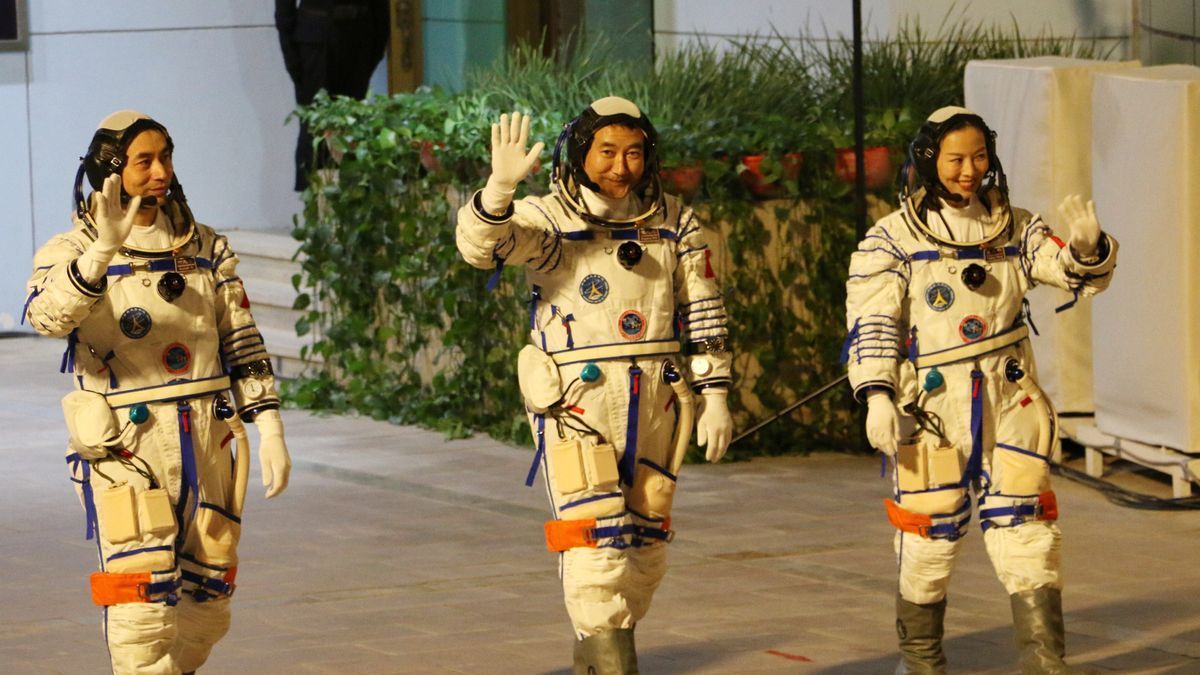A quarter of an hour later, an official from the space agency in charge of manned space flights (CMSA) announced the “success” of the launch.
After about “seven hours of flight”, the spacecraft docked with the space station, CCTV explained. Around 12:50 GMT, the three astronauts entered the main module of the station, according to the CMSA.
The three astronauts, including a woman, take over from the mission crew Shenzhou-13who returned to Earth in mid-April after spending a semester on the space station.
Named Tiangong (“Heavenly Palace”)also known by its acronym CSS (for Chinese space station in English), the facility should be fully operational by the end of the year.
The main challenge for the Shenzhou-14 crew will be receiving and installing two lab modules, which are to be docked with the station and should be shipped in July and October.
“China has never carried out an operation as complex as this. Until now they have only been carried out on Mir and the International Space Station (ISS). It will be a test for the equipment and the material,” Chen Lan highlights. , analyst for the portal Go Taikonauts.com, specializing in the Chinese space program.
Once these last two modules are installed, the Tiangong station will have a definitive T-shape, with a size similar to that of the former Russian-Soviet Mir station. Its life must be at least 10 years.
Shenzhou-14’s crew includes 43-year-old Liu Yang, who was the first Chinese woman in space (2012). Her teammates are Chen Dong (43), mission commander, and Cai Xuzhe (46), who is making her first flight into space after 12 years of preparation.
Towards the end of their stay, before returning to Earth, the three Shenzhou-14 astronauts will spend a few days with their three companions from the future Shenzhou-15 mission.
A novelty of this mission is that, for the first time, two Chinese crews will pass the baton in orbit at the station.
“With Shenzhou-14, Chinese manned space flights are entering a new stage” with “the beginning of permanent occupation of the station,” Jonathan McDowell, an astronomer at the Harvard-Smithsonian Center for Astrophysics in the United States, told AFP.
“In other words, from now on, the goal is to have Chinese astronauts in space all the time,” McDowell added.
The Shenzhou-14 crew will also conduct spacewalks, as well as a series of experiments and Tiangong maintenance.
China has been pushed to build its own station due to its exclusion from the ISS, as the US prohibits NASA from working with Beijing.
China sent its first astronaut into space in 2003.
The Asian giant has spent several decades investing billions of euros in its space program. Since then, it has made some notable achievements, especially in recent years after landing a small robot on Mars in 2021.
In the longer term, China plans to offer space tourism, Zhou Jianping, head of China’s manned space program, said in March.
Source: Ambito
David William is a talented author who has made a name for himself in the world of writing. He is a professional author who writes on a wide range of topics, from general interest to opinion news. David is currently working as a writer at 24 hours worlds where he brings his unique perspective and in-depth research to his articles, making them both informative and engaging.




